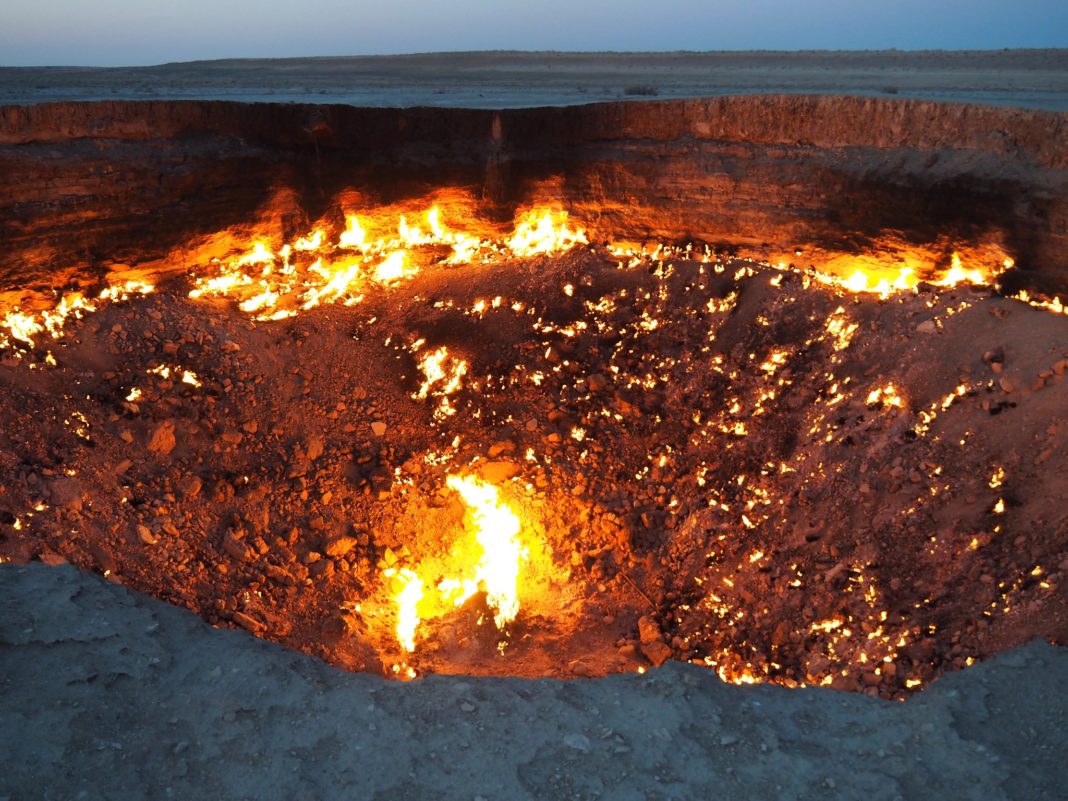The Darvaza Gas Crater is a large crater in the Karakum Desert of north-central Turkmenistan where thousands of flames fueled by seeping natural gas have been burning for decades. The flaming crater’s sights and sounds are frightening enough that local people call it the “Door to Hell” or the “Gates of Hell”.
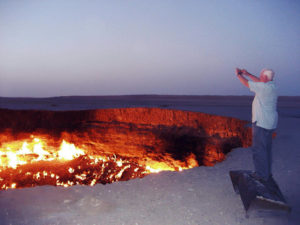
Each dancing flame marks the spot where natural gas (methane) emerges from the walls, from the floor, or from the talus piles within the crater. When natural gas emerges, oxygen in the atmosphere causes it to burst into flames.
People approaching the crater hear the sound of the flames and feel the heat that is too intense to stand at some points along the crater’s edge. The heat and an odor of combustion can be sensed for some distance downwind.
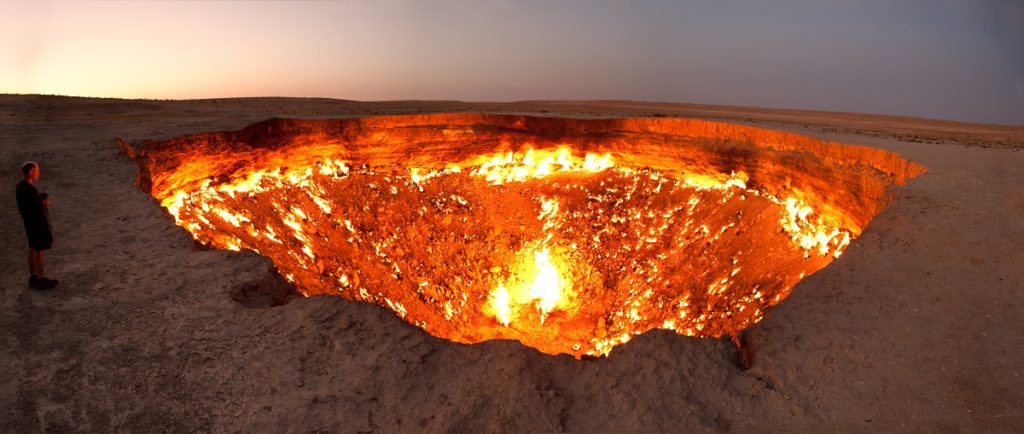
The crater is about 69 meters across and about 30 meters deep. It has an area that would nearly cover ¾ of an American football field – including the end zones.
The origin of the crater is reported as a natural gas drilling accident on Wikipedia.org and many other websites. While these reports are in general agreement, they do not reference any government, historical, or research documents. They also do not provide a statement from a person who witnessed the crater’s formation.
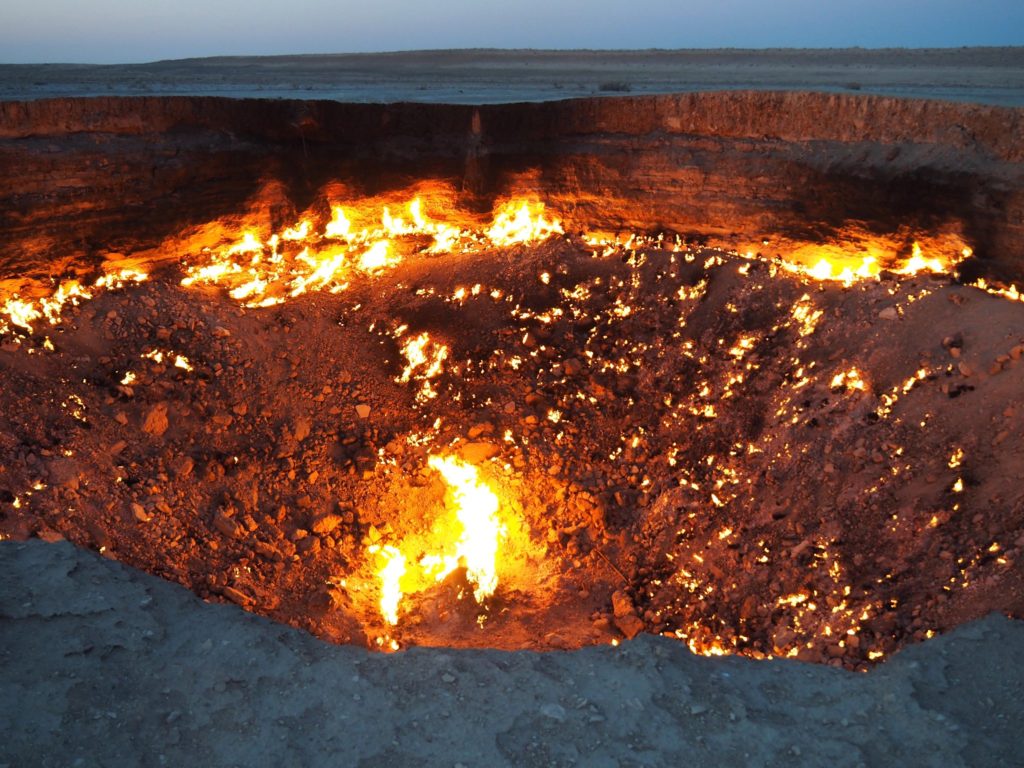
The Darvaza Gas Crater is reported to have formed in about 1971 while Soviet geologists were exploring oil and natural gas. They began drilling and quickly realized that they had penetrated an underground cavern. Then the ground beneath their equipment began to subside.
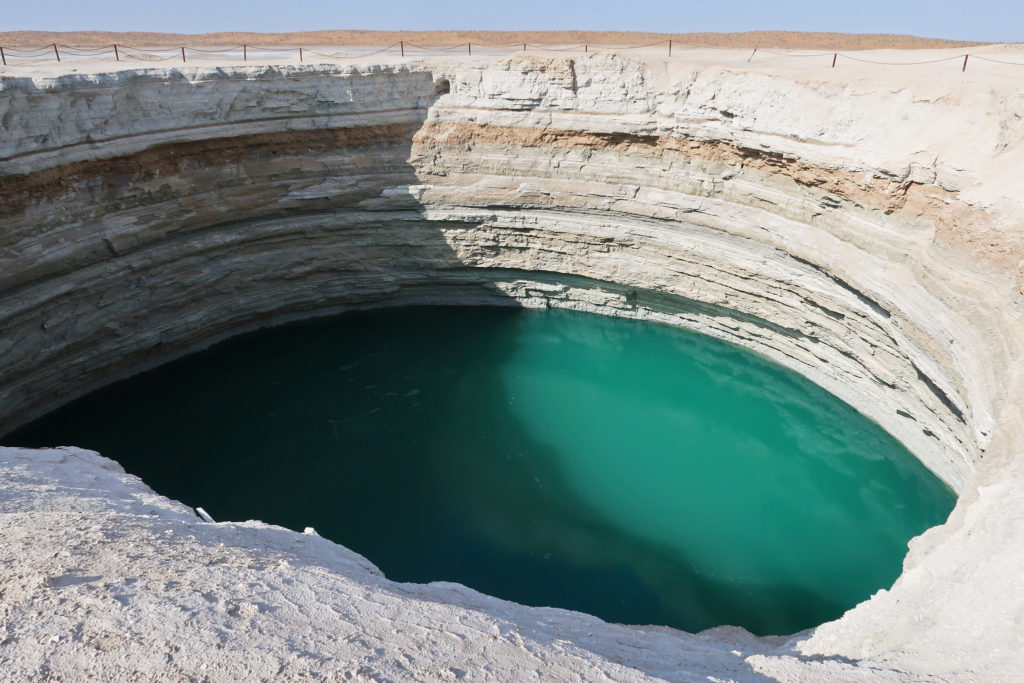
In addition to the Darvaza Gas Crater, there are two similar sinkholes nearby. One is known as the “Water Crater” and the other is known as the “Mud Crater”. The water crater normally has water in the bottom, and the mud crater normally has a pool of viscous mud that is stirred by a steady bubbling of natural gas. The mud crater sometimes has a small number of gas-fed flames.
According to the Internet





